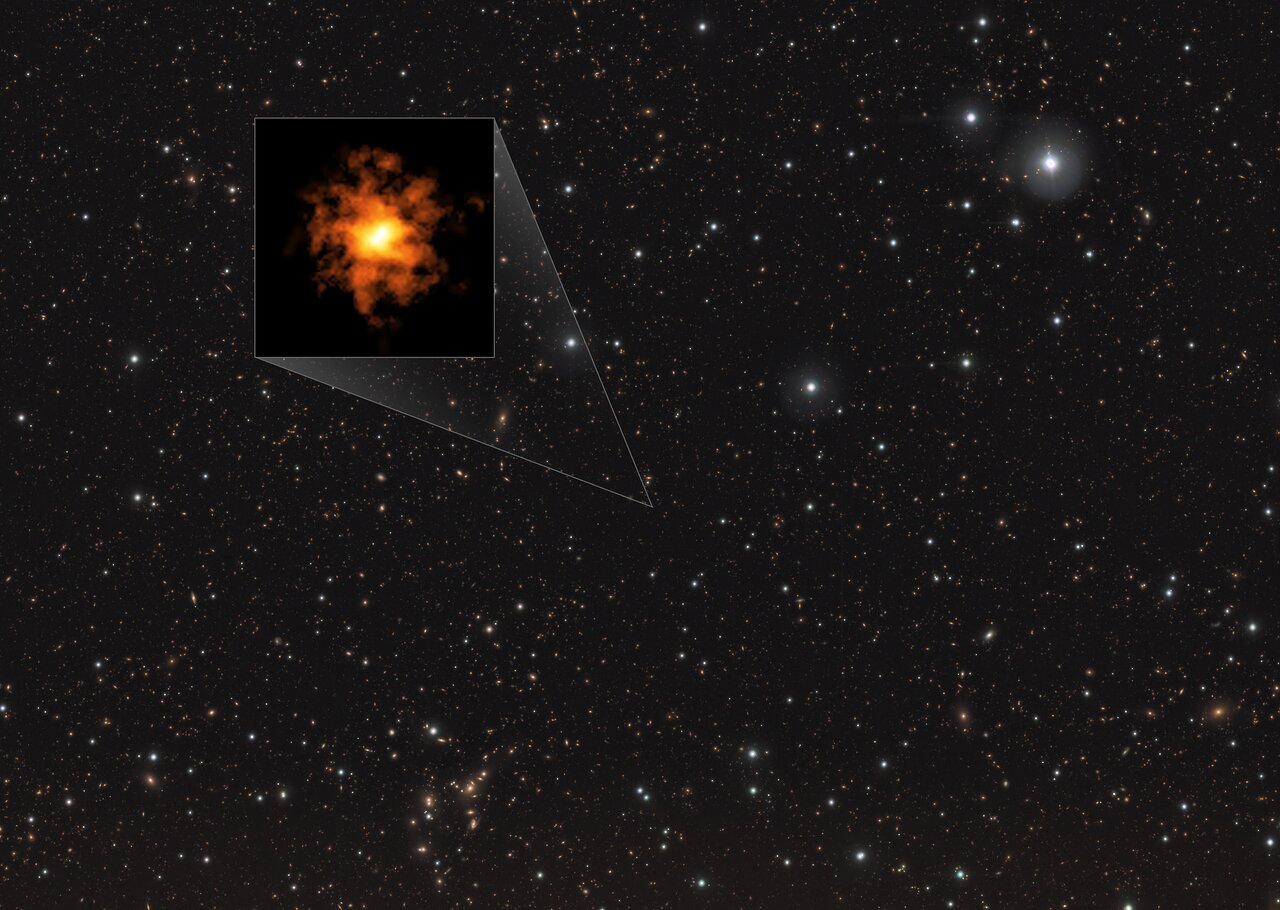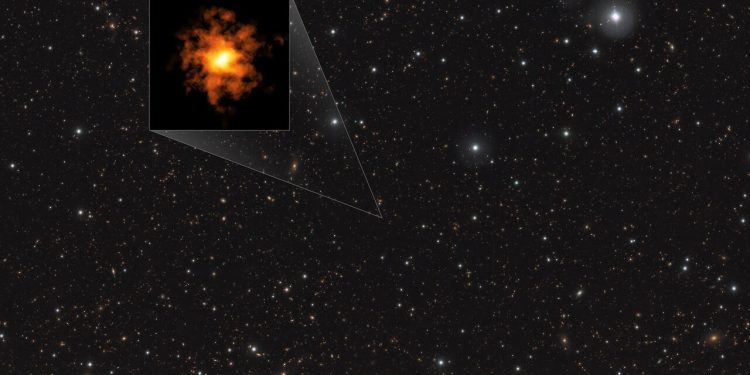Astronomers have made a groundbreaking discovery that has the scientific community buzzing: the most distant rotating disk galaxy ever observed, and it bears an uncanny resemblance to our Milky Way. This extraordinary find, which dates back to a time when the universe was only 700 million years old, is upending our understanding of galaxy formation and evolution.
A Galaxy Defying Expectations
Typically, early galaxies are expected to be chaotic and irregular in appearance. However, the galaxy, dubbed REBELS-25, has left astronomers astounded with its smooth, well-organized structure. Using the highly sensitive Atacama Large Millimeter/submillimeter Array (ALMA), scientists were able to capture this galaxy’s intricate details, revealing features like spiral arms and a central elongated bar—characteristics commonly associated with mature galaxies like our Milky Way.
The discovery was unexpected, as current models of galaxy formation suggest that such well-ordered structures take billions of years to develop. Jacqueline Hodge, an astronomer from Leiden University and coauthor of the study, commented, “We usually assume that the first galaxies would appear small and chaotic, but REBELS-25 defies that expectation with its neatly organized shape.”

Credit:
ALMA (ESO/NAOJ/NRAO)/L. Rowland et al./ESO/J. Dunlop et al. Acknowledgments: CASU, CALET
A Cosmic Mystery, REBELS-25
What makes this discovery even more puzzling is that REBELS-25 formed when the universe was a mere 5% of its current age. Despite being so ancient, it mirrors the Milky Way, which is thought to have evolved over 13.6 billion years. This raises profound questions about how quickly galaxies can evolve into the structured, rotationally-dominated forms we observe today.
Lead researcher Lucie Rowland, a doctoral student at Leiden University, explained, “To witness a galaxy this ancient already showing characteristics similar to our Milky Way is a game-changer. It suggests that galaxies in the early universe may have reached a level of maturity far faster than we ever imagined.”
The Role of Future Observations
This discovery, however, is just the beginning. The team is now eagerly awaiting further observations, particularly with NASA’s James Webb Space Telescope, which could provide even more detailed insights into this ancient galaxy. These findings could challenge long-standing theories about galaxy formation and prompt astronomers to rethink how galaxies like the Milky Way came to be.
The ongoing study of other galaxies in the REBELS program, including REBELS-25, will help researchers create detailed models of their motion and structure, offering a clearer picture of how these early galaxies formed and evolved.











